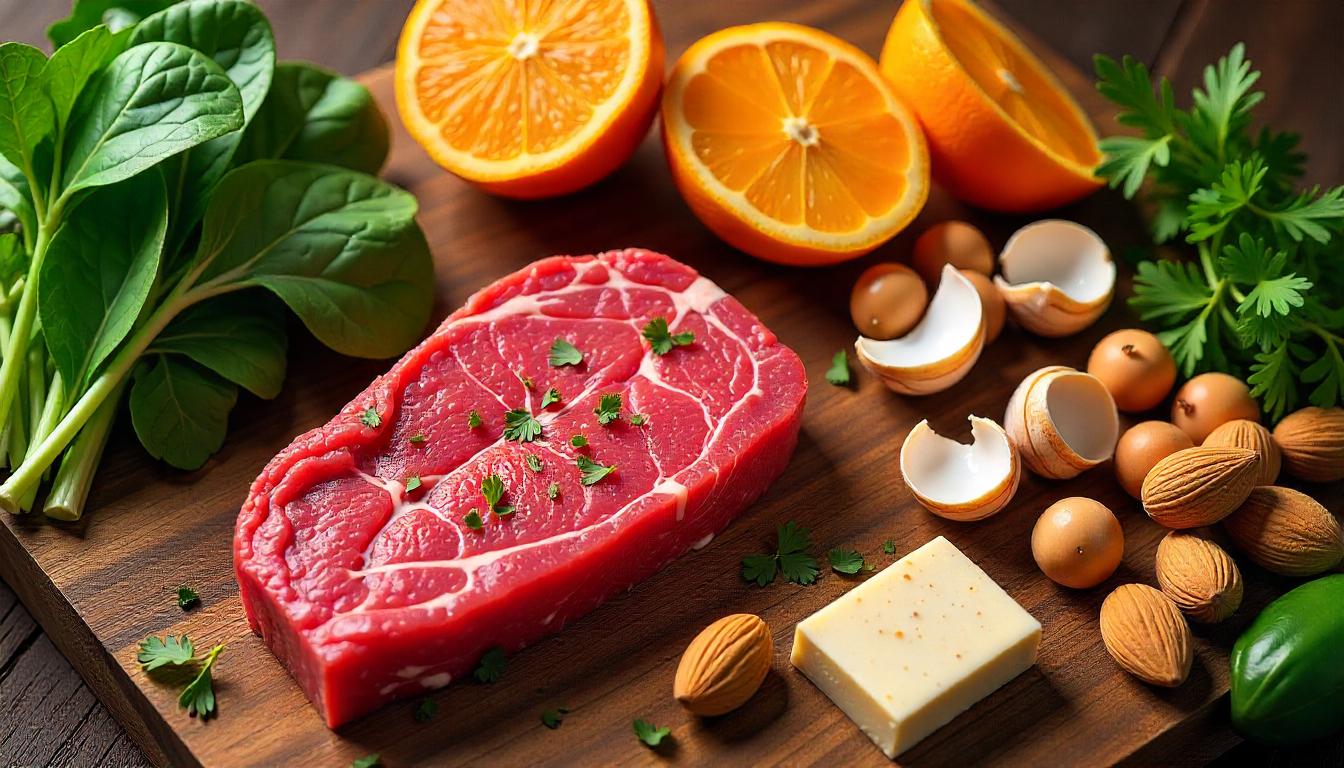Introduction: Why Iron-Rich Foods Are Important for the Body
Iron is a necessary mineral that is vital to many body processes, particularly the synthesis of hemoglobin, the oxygen-transporting protein found in red blood cells. Fatigue, weakness, and a compromised immune system result from your body’s inability to create enough healthy red blood cells when you don’t get enough iron. Consuming iron-rich foods is the most effective way to ensure your body gets the iron it needs naturally and consistently.
Iron-rich foods are therefore essential for sustaining energy levels, cognitive function, and general wellness. In addition to supporting critical functions including oxygen supply and immunological protection, these foods high in iron help avoid iron deficiency.
Iron insufficiency is a common problem in the US, especially for athletes, women, and children. Iron deficiency can be avoided, and your body’s ideal functioning can be supported by eating a balanced combination of plant-based and animal-based iron sources.
Common Symptoms of Low Iron and Iron-Rich Foods
Iron-insufficiency anemia, which presents with several symptoms, can result from iron deficiency. Even while some symptoms are minor, ignoring them could make your disease worse. Here are some things to look out for:
- Constant fatigue or weakness
- Pale or yellowish skin
- Shortness of breath
- Brittle nails
- Headaches or dizziness
- Cold hands and feet
If you notice these symptoms, it’s wise to consult a healthcare provider and increase your intake of iron-rich foods.
Types of Iron in Food: Heme vs. Non-Heme Iron-Rich Foods
There are two primary types of iron found in food:
1. Heme Iron
- Found in animal-based products like red meat, poultry, and seafood
- More easily absorbed by the body
2. Non-Heme Iron
- Found in plant-based foods like beans, lentils, tofu, and spinach
- Absorption is lower, but can be improved by consuming vitamin C-rich foods
Including a mix of both types can help meet your daily iron needs more effectively.
Top Food Categories Rich in Iron
Here’s a list of nutrient-packed, iron-rich food categories you should add to your grocery list:
1. Leafy Green Vegetables
- Spinach
- Kale
- Swiss chard
- Collard greens
2. Legumes
- Lentils
- Chickpeas
- Kidney beans
- Soybeans
3. Red Meat and Poultry
- Beef liver
- Lean ground beef
- Chicken breast
- Turkey
4. Seafood
- Clams
- Oysters
- Tuna
- Sardines
5. Fortified Cereals and Grains
- Iron-fortified breakfast cereals
- Quinoa
- Brown rice
- Oatmeal
6. Nuts and Seeds
- Pumpkin seeds
- Sesame seeds
- Cashews
- Almonds
7. Tofu and Soy Products
- Firm tofu
- Tempeh
- Soy milk
Adding these iron-rich foods to your US grocery list will ensure you’re covering both heme and non-heme iron sources.
Recommended Products (Amazon Affiliate Links)
To make it easier, here are some highly rated iron-rich or iron-supporting products available on Amazon:
1. MegaFood Blood Builder Iron Supplement – Gentle on the stomach, non-constipating formula.
2. Nature’s Path Organic Fortified Cereal – A delicious plant-based source of iron.
3. Cast Iron Skillet – Lodge – Cooking with cast iron can add iron to your meals naturally.
Note: Prices and availability may vary.
Related Posts You May Like
- Top 15 Iron-Rich Foods You Should Add to Your US Grocery List
- Signs Your Body Is Low on Iron: What to Watch For in 2025
- Best Time to Take Iron Supplements for Maximum Absorption
- Iron for Kids: Why It Matters in 2025 & Easy Iron-Rich Foods They’ll Love
- Iron Deficiency vs. Anemia: What’s the Difference?
FAQs About Iron-Rich Foods
Q1: How much iron do I need daily?
A: Women of reproductive age require 18 mg per day, whereas adult men normally require 8 mg. Up to 27 mg per day may be necessary for pregnant women.
Q2: Can iron-rich foods alone treat anemia?
A: Diet alone may help mild forms of anemia, but supplements or medical care are typically needed for severe cases.
Q3: What enhances iron absorption?
A: Foods high in vitamin C, such as bell peppers, oranges, and strawberries, improve the absorption of non-heme iron.
Q4: What blocks iron absorption?
A: When taken with iron-rich meals, calcium supplements, tea, coffee, and high-fiber foods can prevent the absorption of iron.
Conclusion: Add Iron-Rich Foods to Your Diet Today
A proactive step toward improved energy, immunity, and general health is to include foods high in iron in your daily meals. Including foods like leafy greens, lean meats, and fortified cereals is easy and has a big impact, whether your goal is to prevent deficiencies or promote the health of your family.
Don’t wait for symptoms to appear. Start exploring your kitchen with these nutrition-rich options, and feel the difference.
For more in-depth guides on healthy eating, check out Healthline’s Nutrition Hub.
Ready to upgrade your grocery list? Browse the top-rated iron-rich products on Amazon and fuel your body the smart way!
Amazon Affiliate Disclosure: This article may contain affiliate links. As an Amazon Associate, I earn from qualifying purchases, at no extra cost to you.
